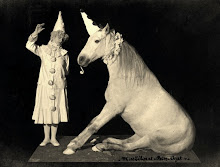
Von Bekesy transected the basilar membrane, separating the base from the apex, and found that it did not alter frequency perception in the slightest! So von Bekesy hypothesized that the waves would be in the fluid. The cochlea is, after all, filled with a fluid called endolymph (which is very similar to intracellular fluid).

But then what of the place code? For von Bekesy was certain (though it had not been proven) that for each frequency in an auditory stimulus, there was a unique place on the basilar membrane. He decided to do what any inquisitive mind must: he examined it underneath a microscope. And although he could only use low frequency stimuli (because high frequencies are so high that our eyes cannot perceive them), he found that certain places on the basilar membrane vibrate better at some frequencies than at others.

From this he drew a frequency tuning curve:

If you were to choose a different place on the basilar membrane and measure a different frequency, the curve will be the very same shape, but with the most sensitive point in a different place.
Then physiologist Bill Rhode had a very clever idea: to use the nuclear physics Mossbauer technique to measure frequency along the entire basilar membrane. The technique is done as follows: first, a tiny piece of palladium foil (which is very similar to aluminum foil) is soaked in radioactive cobalt. Next, the cochlea is gently opened and the foil is floated (from the bottom, to avoid the organ of Corti) onto the basilar membrane. The radioactive cobalt then emits gamma rays at such an incredibly high frequency that they are actually out of our acoustic range, but are still measurable. Finally, something else in the cochlea but be in the cochlea to will measure the gamma rays. If the basilar membrane (and the palladium foil) move up, the wavelengths of the gamma rays get squeezed in; or down, and pulled away (see: Doppler effect). This squeezing and stretching allows very accurate measurement of basilar membrane movement, with several benefits, the most important being that this can be done in a live animal. Using this technique, Rhode was able to determine the specific frequencies of the place code along the basilar membrane.

But in a seemingly unfortunate turn of events, the animal which was being used for this test died. Rhode would not let this stop him. He decided to perform the very same test, but this time on the deceased animal. The results produced a very strange frequency tuning curve indeed:

It looked just like the curve produced by von Bekesy in the removed cochlea seen under the microscope! Rhode decided to plot the results from the animal’s live cochlea on the same type of curve, which brings us to one of the greatest mysteries in psychoacoustic history, for the frequency tuning curve looked like this:

The curve produced from the cochlea of the dead animal (which from hereon in will be referred to as the passive curve) is but exactly what one would have expected the curve to look like (especially after the discoveries of von Bekesy). However the curve from the live animal (the active curve) is simply impossible! The basilar membrane does not have the physical capability to produce such a curve; it is far more selective (look at how low it dips) and sensitive (look at how skinny it is) than it should be...
But along came 5 experiments that explained the whole thing, done separately by Bob Harrison, Alan Cody, Weiderhold, Mario Ruggero and Charlie Liberman. Their work ultimately uncovered the truth behind the mystery of the basilar membrane and why it is that the active and passive frequency tuning curves are so vastly different. So here is how it works:
First, the stapes pushes on the oval window (following a succession of impedance mismatch solutions), in the middle ear.

This sets the fluid in the cochlea (the endolymph) into motion. The motion of the endolymph causes the hair cells to move. The outer hair cells are anchored to both the basilar membrane and the tectorial membrane, and move in a contractile way as a result of metabolic energy from a protein called prestin. The amplitude of this contracted response is equal to the membrane potential: the outer hair cells create the mechanical signal in auditory transduction.

The combination of fluid movement and outer hair cell contraction causes movement of the basilar membrane, which then also moves the inner hair cells: they are the passive transducers.
And so, we now know that Rhode’s results on the passive frequency tuning curve were as a result of a lack of metabolic activity (as in von Bekesy’s)in the outer hair cells; metabolic activity does not occur in death.
The basilar membrane is not physically capable of producing the active frequency tuning curve- not without the help of the outer hair cells, that is.


No comments:
Post a Comment